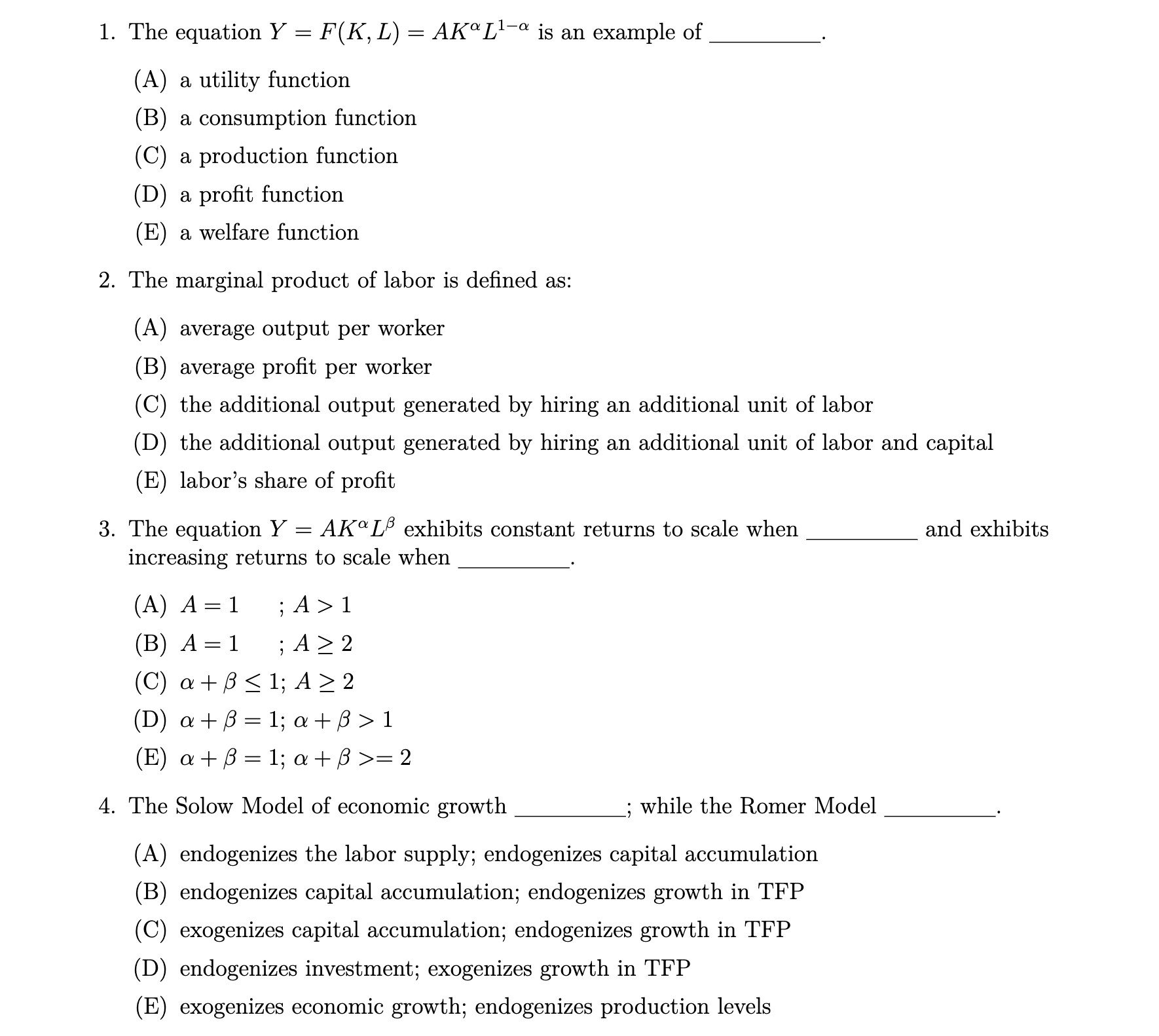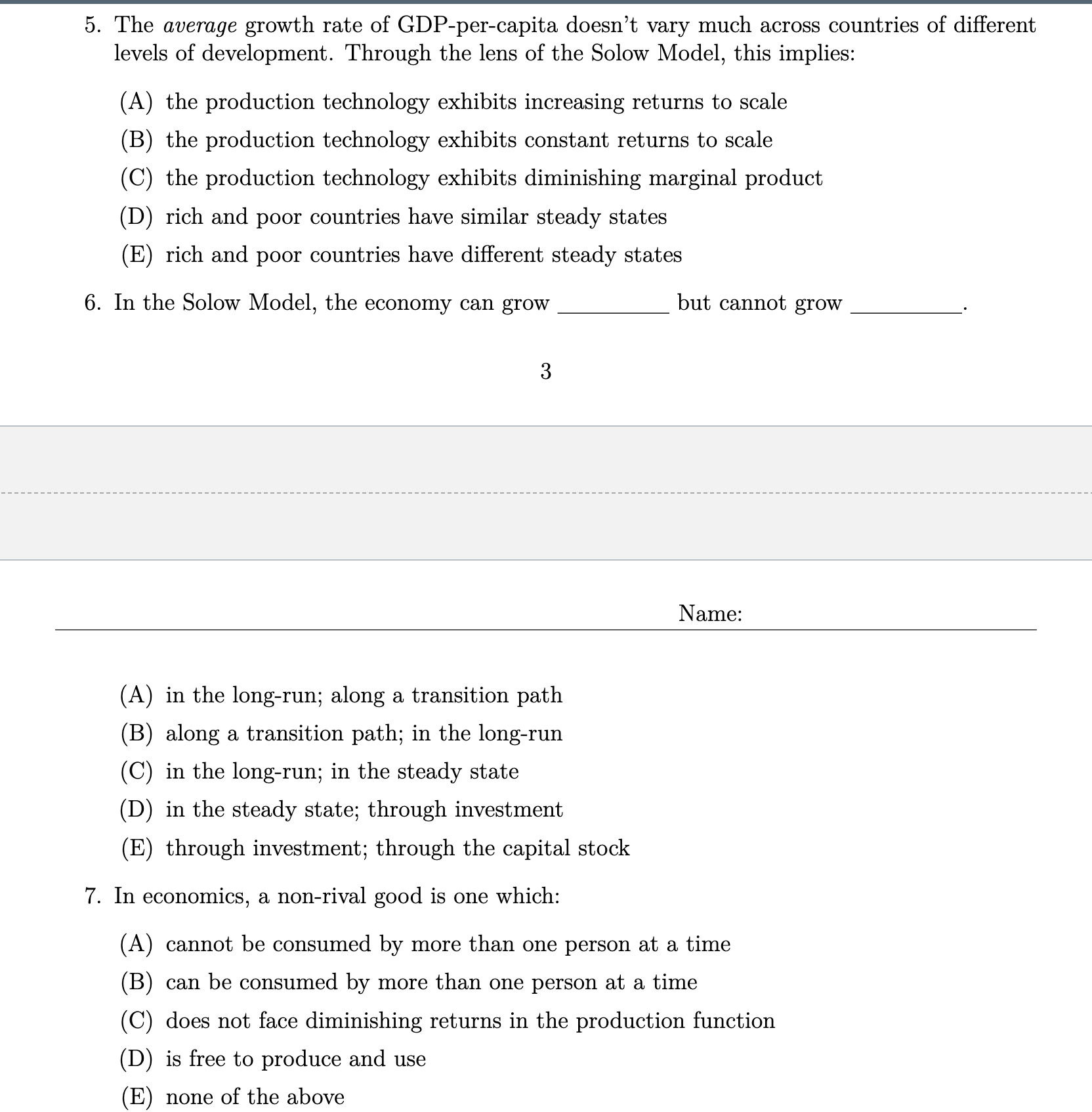1-10 I guess answer of 1 is C, instead of that, I am not sure about the answeres.
1. The equation Y = F(K, L) = AKL]- is an example of (A) a utility function (B) a consumption function C) a production function (D) a profit function (E) a welfare function 2. The marginal product of labor is defined as: (A) average output per worker B) average profit per worker (C) the additional output generated by hiring an additional unit of labor (D) the additional output generated by hiring an additional unit of labor and capital (E) labor's share of profit 3. The equation Y = AKL exhibits constant returns to scale when and exhibits increasing returns to scale when (A) A =1 ; A>1 (B) A =1 ; A2 2 (C) a + 35 1; A2 2 (D) at B = 1; a+3>1 ( E) at B = 1; a+B>=2 4. The Solow Model of economic growth ; while the Romer Model A) endogenizes the labor supply; endogenizes capital accumulation (B) endogenizes capital accumulation; endogenizes growth in TFP (C) exogenizes capital accumulation; endogenizes growth in TFP (D) endogenizes investment; exogenizes growth in TFP (E) exogenizes economic growth; endogenizes production levels5. The average growth rate of GDPpercapita doesn't vary much across countries of different levels of develOpment. Through the lens of the Solow Model, this implies: (A) the production technology exhibits increasing returns to scale (B) the production technology exhibits c0nstant returns to scale (C) the production technology exhibits diminishing marginal product (D) rich and poor countries have similar steady states (E) rich and poor countries have different steady states 6. In the Solow Model, the economy can grow but cannot grow Name: (A) in the longrun; along a transition path (B) along a transition path; in the longrun (C) in the longrun; in the steady state (D) in the steady state; through investment (E) through investment; through the capital stock 7. In economics, a nonrival good is one which: (A) cannot be consumed by more than one person at a time (B) can be consumed by more than one person at a time (0) does not face diminishing returns in the production function (D) is free to produce and use (E) none of the above 8. Because generating new innovation is , rms must be able to charge a price in order to recoup R&D costs. (A) nonrival ; above marginal cost (B) costly ; above marginal cost (0) costly ; below marginal cost (D) public ; below marginal cost (E) public ; above the marginal cost 9. Which of the following increases a rm's incentive to innovate? (A) patents (B) subsidies (C) prizes (D) copyright (E) all of the above 10. In the Romer Model, the accumulation of sustains longrun growth because it is and hence gives rise to (A) knowledge; nonrival; increasing returns to scale (B) knowledge; productive; nonrivalry ( ( (E) capitalperworker; eicient; monopoly prots C) knowedge; expensive; monopoly prots D) capitalperworker; productive; nonrivalry









